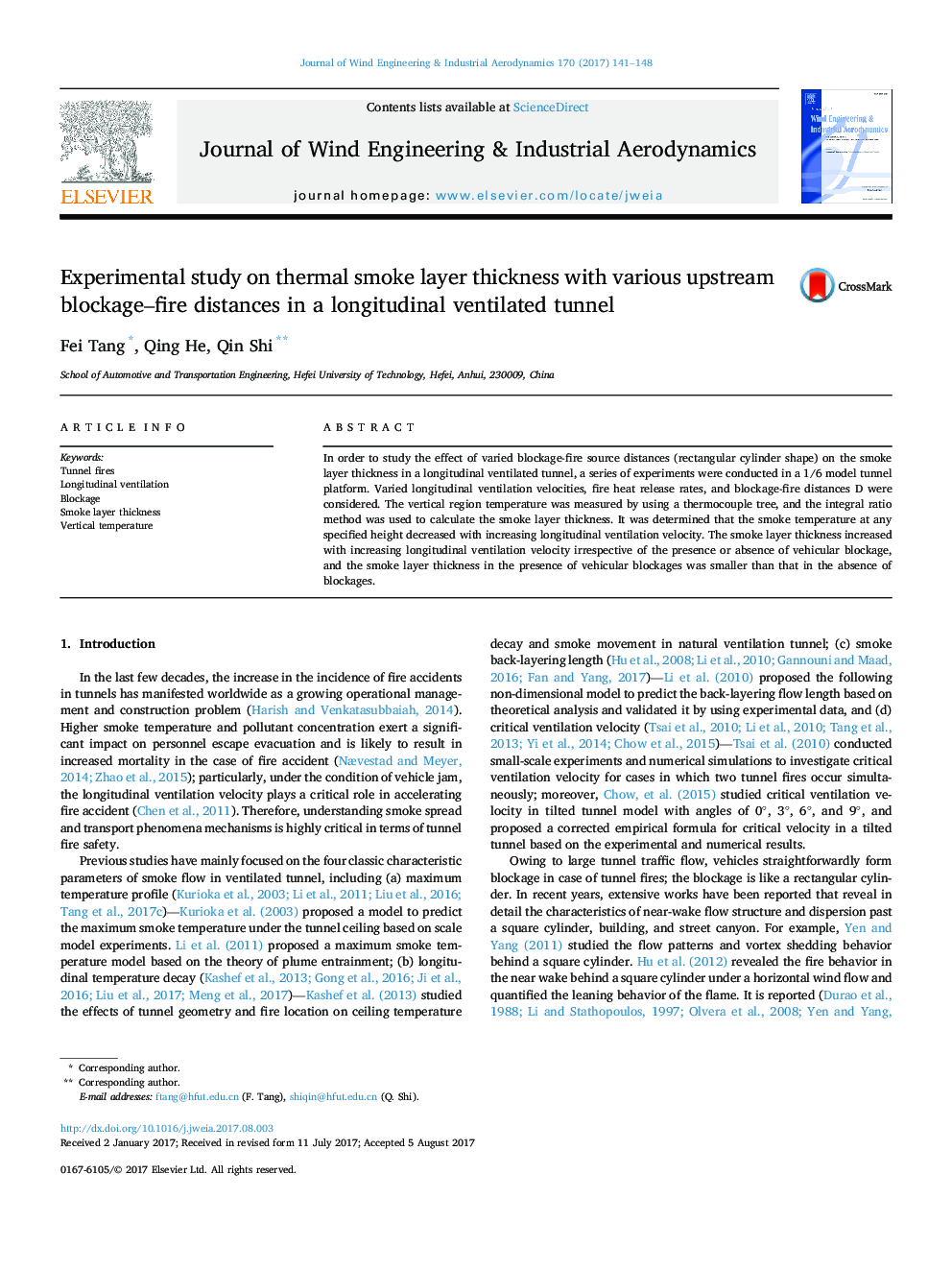| Article ID | Journal | Published Year | Pages | File Type |
|---|---|---|---|---|
| 4924755 | Journal of Wind Engineering and Industrial Aerodynamics | 2017 | 8 Pages |
Abstract
In order to study the effect of varied blockage-fire source distances (rectangular cylinder shape) on the smoke layer thickness in a longitudinal ventilated tunnel, a series of experiments were conducted in a 1/6 model tunnel platform. Varied longitudinal ventilation velocities, fire heat release rates, and blockage-fire distances D were considered. The vertical region temperature was measured by using a thermocouple tree, and the integral ratio method was used to calculate the smoke layer thickness. It was determined that the smoke temperature at any specified height decreased with increasing longitudinal ventilation velocity. The smoke layer thickness increased with increasing longitudinal ventilation velocity irrespective of the presence or absence of vehicular blockage, and the smoke layer thickness in the presence of vehicular blockages was smaller than that in the absence of blockages.
Related Topics
Physical Sciences and Engineering
Energy
Renewable Energy, Sustainability and the Environment
Authors
Fei Tang, Qing He, Qin Shi,
